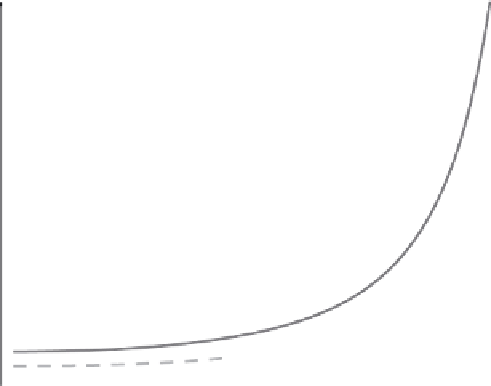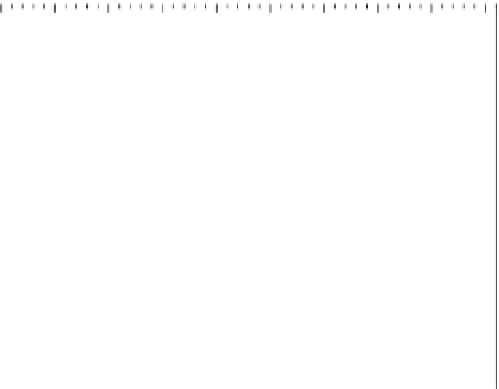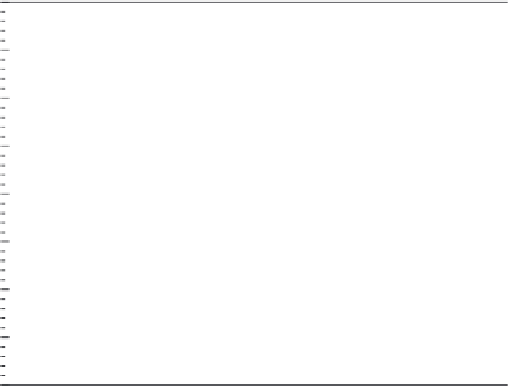Environmental Engineering Reference
In-Depth Information
1600
1400
1200
1000
800
600
400
200
0
0 0 0 0 0 0 0 0 0 0
Mode Mixity,
ψ
(degrees)
Figure 9: Initial interface fracture energy as a function of mode mixity for
interlaminar cracking of a unidirectional glass fi ber/polyester composite
[30]. A mode mixity of 0° corresponds to a crack opening displacement
normal to the cracking plane and a mode mixity of 90° corresponds to
tangential crack opening displacements.
in models. Few direct measurement methods exist. For pure mode I, the cohesive
law can be determined by direct tension tests [26]. Another method is to determine
the bridging stresses from the crack opening profi le [27]. Yet another method is to
derive the bridging law from the J integral [28]. In that respect a DCB specimen
loaded with pure bending moments is preferred [29], since the J integral can be
expressed in closed analytical form [11].
Figure 9 shows a typical example of the dependency of the fracture energy on
mode mixity for a unidirectional glass fi ber composite laminate; the testing was
conducted using the DCB-UBM specimen [30]. The initiation fracture energy
increases signifi cantly with increasing mode mixity (increasing amount of tangential
crack opening displacement).
Very few studies address the determination of mixed mode cohesive laws. In
some studies, only pure mode I and mode II cohesive laws are determined from
pure mode I and mode II tests and treat them as independent cohesive laws [31,
32]. A more recent approach is to obtain mixed mode cohesive laws from results
of a DCB-UBM specimen. For this specimen and loading confi guration, the J
integral is obtained in closed form even in the case of large-scale bridging. With
the closed-form solution for the J integral, cohesive laws can be obtained by partial
differentiation of the J integral with respect to the end-opening and end-sliding
displacements of the crack [30, 33].























































































































Search WWH ::

Custom Search